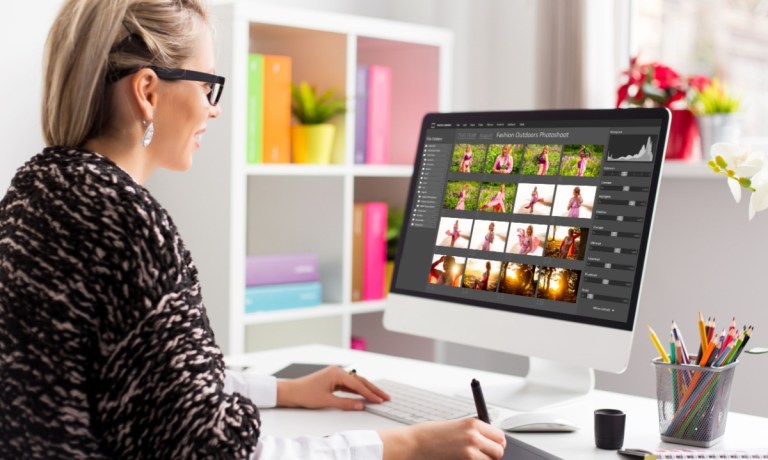
A growing crop of AI photography tools is promising to help online retailers create new kinds of product images at a fraction of traditional studio costs.
The technology, exemplified by Nextech3D.AI’s new virtual photography platform, is part of a broader industry shift that analysts say could revolutionize how eCommerce visuals are produced. It could save retailers money while enabling features like instant 360-degree views and real-time image customization. Brands are rapidly adopting these AI imaging tools, marking what experts call a fundamental shift in how online products are presented to consumers.
“eCommerce is booming, but the struggle for bringing the in-store experience to the virtual world has always been the challenge,” Andrew Cussens, owner and CEO of FilmFolk, a professional film and photography studio, told PYMNTS. “That is where AI and 3D graphics have tremendous potential to transform online commerce and customer experiences.”
In recent months, AI-generated imagery has become more common in commerce, helping brands adapt visuals quickly and cost-effectively. Fashion retailers like Mango have incorporated AI into ad campaigns to keep up with fast-moving trends and test new styles. Getty Images introduced “Generative AI by Getty Images,” letting users create visuals directly from its library while navigating copyright issues. Education technology companies like Headway are also using AI tools to produce more engaging ad visuals. This wave of AI adoption signals a shift in commercial imagery, as businesses experiment with automated, adaptable visuals to reach consumers.
Nextech3D.ai’s system, which works with 3D models and 2D pictures, allows Amazon, Etsy and eBay merchants to generate multiple high-resolution product images with custom backgrounds, with resolutions ranging from 1K to 4K.
The launch comes as the eCommerce product photography market is expected to grow from $129 billion in 2023 to $275.4 billion by 2030, according to Verified Market Reports. Industry data indicates that eCommerce product pages featuring high-quality images achieve 30% higher conversion rates than those without, while detailed product photography can reduce return rates by up to 22%.
To get a sense of the possibilities of AI photos, imagine a customer buying furniture on the web, Cussens said.
“At the moment, they rely on still images and tend to be unable to measure size or sensation,” he added. “But artificially generated 3D graphics can make this experience different. Consider an online showroom where customers can walk around a 3D model, take a virtual tour of a living room, and imagine that sofa sitting next to their existing pieces of furniture. It’s an immersive, AI-powered experience that gives you a better sense of what the product looks like than 2D images.”
Cussens said his team has already deployed the technology, recently creating a virtual 3D showroom for an apparel manufacturer.
“Clients could flip the clothes over, focus on details, and even inspect how it draped over different body shapes,” he said. “The results were impressive. In comparison to their conventional online shop, the AI-powered virtual reality experience reduced returns by 20%. It made customers more aware of what they were purchasing and less likely to feel disappointed when the product was delivered.”
Ric Lebre, an advertising professional who is a professor at the Link School of Business, told PYMNTS that consumers likely won’t notice major changes except for faster product releases. While generative AI excels at rapidly creating prototypes and mock-ups, its outputs can be inconsistent — sometimes producing results that are unrealistic, incorrectly sized or significantly different from the final product, depending on how the prompts are written.
“Now, on the perspective of those who work for exactly this industry, job demands will be reduced drastically,” he said. “This is because now we don’t need to hire a photographer and a model, stage a set to click the image. All we have to do is write a prompt and get a reference photo from a cell phone to make a very professional looking product photograph. And if you think that the power of AI can escalate pretty fast … it could create new products based on search queries and release them before it hits the factories.”